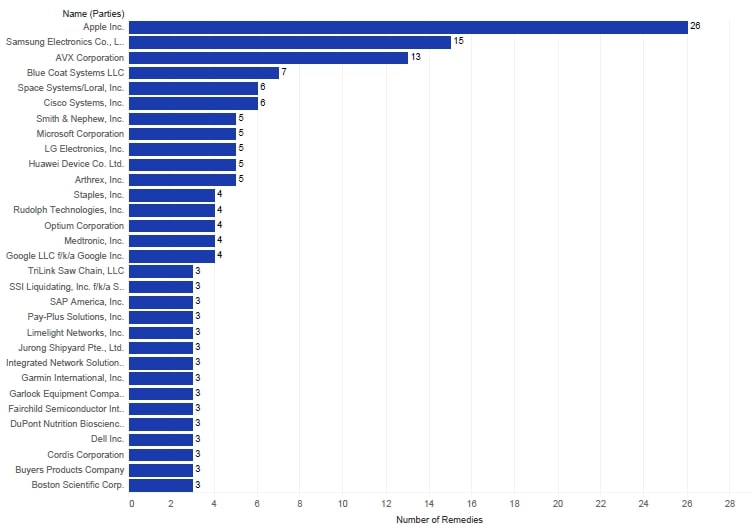What’s in a number? Apparently, not much. While headline-grabbing patent damages awards were up in 2020 and 2021, payouts on these verdicts are exceedingly rare.
It may look like good news for plaintiffs that in the past eight months there have been two billion dollar plus patent damages awards, but these ‘wins’ are often little more than a data point for negotiations and the verdicts are either thrown out on appeal, reduced or settled out of court.
Recently, Fortress-backed VLSI secured a $2.1 billion jury award against Intel in WD TX. 2020 had multiple $100 million verdicts. According to Docket Navigator, via IAM, few of them will be will be paid, especially the largest ones.
The top five patent awards since 2008 have yet to be paid (see chart above).
Apple and Samsung are the most frequent defendants of patent suits since 2008, with 26 and 15 cases, respectively. Awards against them totaled $5.1 billion and $3.8 billion, but most were never paid.

So what is the point of costly patent suits if the damages are rarely paid? For one, they tend to force parties to the negotiating table for serious discussion and, in theory, encourage other potential infringers to take a license or possibly be subject to similar damages.
More than Quality Patents
You might ask how effective is the patent system if it takes some five years, $10 million dollars and teams of attorneys and experts to have a meaningful discussion about a business agreement that should have been signed in good faith with far less fanfare?
Big stakes litigation benefits the best-funded parties — those who have the time, patience and capital to prevail. With the help of litigation funding, more plaintiffs are falling into that category. When even the most formidable plaintiffs come up against the biggest defendants, more than strong patents and obvious infringement are required to prevail.
The bigger question: What impact does this inefficient process have on innovation? For an invention to prove its value it must be much greater than good or clearly infringed.

Image source: IAM via Docket Navigator

